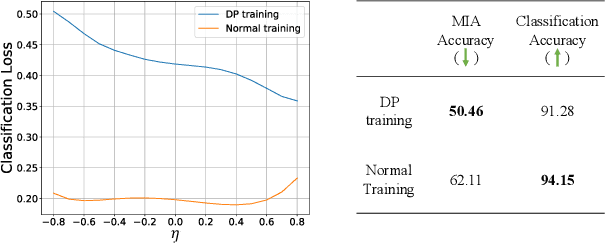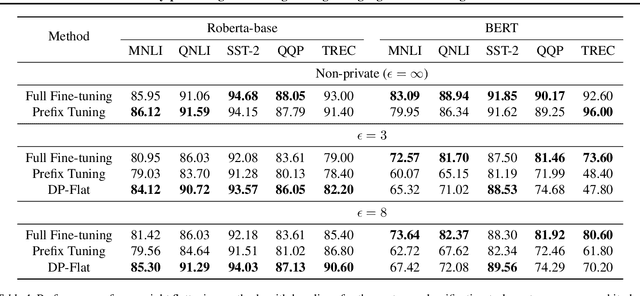Tiejin Chen
Ben
Uncertainty Quantification and Confidence Calibration in Large Language Models: A Survey
Mar 20, 2025Abstract:Large Language Models (LLMs) excel in text generation, reasoning, and decision-making, enabling their adoption in high-stakes domains such as healthcare, law, and transportation. However, their reliability is a major concern, as they often produce plausible but incorrect responses. Uncertainty quantification (UQ) enhances trustworthiness by estimating confidence in outputs, enabling risk mitigation and selective prediction. However, traditional UQ methods struggle with LLMs due to computational constraints and decoding inconsistencies. Moreover, LLMs introduce unique uncertainty sources, such as input ambiguity, reasoning path divergence, and decoding stochasticity, that extend beyond classical aleatoric and epistemic uncertainty. To address this, we introduce a new taxonomy that categorizes UQ methods based on computational efficiency and uncertainty dimensions (input, reasoning, parameter, and prediction uncertainty). We evaluate existing techniques, assess their real-world applicability, and identify open challenges, emphasizing the need for scalable, interpretable, and robust UQ approaches to enhance LLM reliability.
Generative AI in Transportation Planning: A Survey
Mar 10, 2025Abstract:The integration of generative artificial intelligence (GenAI) into transportation planning has the potential to revolutionize tasks such as demand forecasting, infrastructure design, policy evaluation, and traffic simulation. However, there is a critical need for a systematic framework to guide the adoption of GenAI in this interdisciplinary domain. In this survey, we, a multidisciplinary team of researchers spanning computer science and transportation engineering, present the first comprehensive framework for leveraging GenAI in transportation planning. Specifically, we introduce a new taxonomy that categorizes existing applications and methodologies into two perspectives: transportation planning tasks and computational techniques. From the transportation planning perspective, we examine the role of GenAI in automating descriptive, predictive, generative, simulation, and explainable tasks to enhance mobility systems. From the computational perspective, we detail advancements in data preparation, domain-specific fine-tuning, and inference strategies, such as retrieval-augmented generation and zero-shot learning tailored to transportation applications. Additionally, we address critical challenges, including data scarcity, explainability, bias mitigation, and the development of domain-specific evaluation frameworks that align with transportation goals like sustainability, equity, and system efficiency. This survey aims to bridge the gap between traditional transportation planning methodologies and modern AI techniques, fostering collaboration and innovation. By addressing these challenges and opportunities, we seek to inspire future research that ensures ethical, equitable, and impactful use of generative AI in transportation planning.
Uncertainty Quantification of Large Language Models through Multi-Dimensional Responses
Feb 25, 2025Abstract:Large Language Models (LLMs) have demonstrated remarkable capabilities across various tasks due to large training datasets and powerful transformer architecture. However, the reliability of responses from LLMs remains a question. Uncertainty quantification (UQ) of LLMs is crucial for ensuring their reliability, especially in areas such as healthcare, finance, and decision-making. Existing UQ methods primarily focus on semantic similarity, overlooking the deeper knowledge dimensions embedded in responses. We introduce a multi-dimensional UQ framework that integrates semantic and knowledge-aware similarity analysis. By generating multiple responses and leveraging auxiliary LLMs to extract implicit knowledge, we construct separate similarity matrices and apply tensor decomposition to derive a comprehensive uncertainty representation. This approach disentangles overlapping information from both semantic and knowledge dimensions, capturing both semantic variations and factual consistency, leading to more accurate UQ. Our empirical evaluations demonstrate that our method outperforms existing techniques in identifying uncertain responses, offering a more robust framework for enhancing LLM reliability in high-stakes applications.
Zer0-Jack: A Memory-efficient Gradient-based Jailbreaking Method for Black-box Multi-modal Large Language Models
Nov 12, 2024



Abstract:Jailbreaking methods, which induce Multi-modal Large Language Models (MLLMs) to output harmful responses, raise significant safety concerns. Among these methods, gradient-based approaches, which use gradients to generate malicious prompts, have been widely studied due to their high success rates in white-box settings, where full access to the model is available. However, these methods have notable limitations: they require white-box access, which is not always feasible, and involve high memory usage. To address scenarios where white-box access is unavailable, attackers often resort to transfer attacks. In transfer attacks, malicious inputs generated using white-box models are applied to black-box models, but this typically results in reduced attack performance. To overcome these challenges, we propose Zer0-Jack, a method that bypasses the need for white-box access by leveraging zeroth-order optimization. We propose patch coordinate descent to efficiently generate malicious image inputs to directly attack black-box MLLMs, which significantly reduces memory usage further. Through extensive experiments, Zer0-Jack achieves a high attack success rate across various models, surpassing previous transfer-based methods and performing comparably with existing white-box jailbreak techniques. Notably, Zer0-Jack achieves a 95\% attack success rate on MiniGPT-4 with the Harmful Behaviors Multi-modal Dataset on a black-box setting, demonstrating its effectiveness. Additionally, we show that Zer0-Jack can directly attack commercial MLLMs such as GPT-4o. Codes are provided in the supplement.
SynTraC: A Synthetic Dataset for Traffic Signal Control from Traffic Monitoring Cameras
Aug 18, 2024



Abstract:This paper introduces SynTraC, the first public image-based traffic signal control dataset, aimed at bridging the gap between simulated environments and real-world traffic management challenges. Unlike traditional datasets for traffic signal control which aim to provide simplified feature vectors like vehicle counts from traffic simulators, SynTraC provides real-style images from the CARLA simulator with annotated features, along with traffic signal states. This image-based dataset comes with diverse real-world scenarios, including varying weather and times of day. Additionally, SynTraC also provides different reward values for advanced traffic signal control algorithms like reinforcement learning. Experiments with SynTraC demonstrate that it is still an open challenge to image-based traffic signal control methods compared with feature-based control methods, indicating our dataset can further guide the development of future algorithms. The code for this paper can be found in \url{https://github.com/DaRL-LibSignal/SynTraC}.SynTraC
LLM Uncertainty Quantification through Directional Entailment Graph and Claim Level Response Augmentation
Jul 01, 2024



Abstract:The Large language models (LLMs) have showcased superior capabilities in sophisticated tasks across various domains, stemming from basic question-answer (QA), they are nowadays used as decision assistants or explainers for unfamiliar content. However, they are not always correct due to the data sparsity in specific domain corpus, or the model's hallucination problems. Given this, how much should we trust the responses from LLMs? This paper presents a novel way to evaluate the uncertainty that captures the directional instability, by constructing a directional graph from entailment probabilities, and we innovatively conduct Random Walk Laplacian given the asymmetric property of a constructed directed graph, then the uncertainty is aggregated by the derived eigenvalues from the Laplacian process. We also provide a way to incorporate the existing work's semantics uncertainty with our proposed layer. Besides, this paper identifies the vagueness issues in the raw response set and proposes an augmentation approach to mitigate such a problem, we conducted extensive empirical experiments and demonstrated the superiority of our proposed solutions.
Are Classification Robustness and Explanation Robustness Really Strongly Correlated? An Analysis Through Input Loss Landscape
Mar 09, 2024Abstract:This paper delves into the critical area of deep learning robustness, challenging the conventional belief that classification robustness and explanation robustness in image classification systems are inherently correlated. Through a novel evaluation approach leveraging clustering for efficient assessment of explanation robustness, we demonstrate that enhancing explanation robustness does not necessarily flatten the input loss landscape with respect to explanation loss - contrary to flattened loss landscapes indicating better classification robustness. To deeply investigate this contradiction, a groundbreaking training method designed to adjust the loss landscape with respect to explanation loss is proposed. Through the new training method, we uncover that although such adjustments can impact the robustness of explanations, they do not have an influence on the robustness of classification. These findings not only challenge the prevailing assumption of a strong correlation between the two forms of robustness but also pave new pathways for understanding relationship between loss landscape and explanation loss.
Privacy-preserving Fine-tuning of Large Language Models through Flatness
Mar 07, 2024



Abstract:The privacy concerns associated with the use of Large Language Models (LLMs) have grown recently with the development of LLMs such as ChatGPT. Differential Privacy (DP) techniques are explored in existing work to mitigate their privacy risks at the cost of generalization degradation. Our paper reveals that the flatness of DP-trained models' loss landscape plays an essential role in the trade-off between their privacy and generalization. We further propose a holistic framework to enforce appropriate weight flatness, which substantially improves model generalization with competitive privacy preservation. It innovates from three coarse-to-grained levels, including perturbation-aware min-max optimization on model weights within a layer, flatness-guided sparse prefix-tuning on weights across layers, and weight knowledge distillation between DP \& non-DP weights copies. Comprehensive experiments of both black-box and white-box scenarios are conducted to demonstrate the effectiveness of our proposal in enhancing generalization and maintaining DP characteristics. For instance, on text classification dataset QNLI, DP-Flat achieves similar performance with non-private full fine-tuning but with DP guarantee under privacy budget $\epsilon=3$, and even better performance given higher privacy budgets. Codes are provided in the supplement.
When eBPF Meets Machine Learning: On-the-fly OS Kernel Compartmentalization
Jan 11, 2024



Abstract:Compartmentalization effectively prevents initial corruption from turning into a successful attack. This paper presents O2C, a pioneering system designed to enforce OS kernel compartmentalization on the fly. It not only provides immediate remediation for sudden threats but also maintains consistent system availability through the enforcement process. O2C is empowered by the newest advancements of the eBPF ecosystem which allows to instrument eBPF programs that perform enforcement actions into the kernel at runtime. O2C takes the lead in embedding a machine learning model into eBPF programs, addressing unique challenges in on-the-fly compartmentalization. Our comprehensive evaluation shows that O2C effectively confines damage within the compartment. Further, we validate that decision tree is optimally suited for O2C owing to its advantages in processing tabular data, its explainable nature, and its compliance with the eBPF ecosystem. Last but not least, O2C is lightweight, showing negligible overhead and excellent sacalability system-wide.
Uncertainty Regularized Evidential Regression
Jan 03, 2024Abstract:The Evidential Regression Network (ERN) represents a novel approach that integrates deep learning with Dempster-Shafer's theory to predict a target and quantify the associated uncertainty. Guided by the underlying theory, specific activation functions must be employed to enforce non-negative values, which is a constraint that compromises model performance by limiting its ability to learn from all samples. This paper provides a theoretical analysis of this limitation and introduces an improvement to overcome it. Initially, we define the region where the models can't effectively learn from the samples. Following this, we thoroughly analyze the ERN and investigate this constraint. Leveraging the insights from our analysis, we address the limitation by introducing a novel regularization term that empowers the ERN to learn from the whole training set. Our extensive experiments substantiate our theoretical findings and demonstrate the effectiveness of the proposed solution.
 Add to Chrome
Add to Chrome Add to Firefox
Add to Firefox Add to Edge
Add to Edge